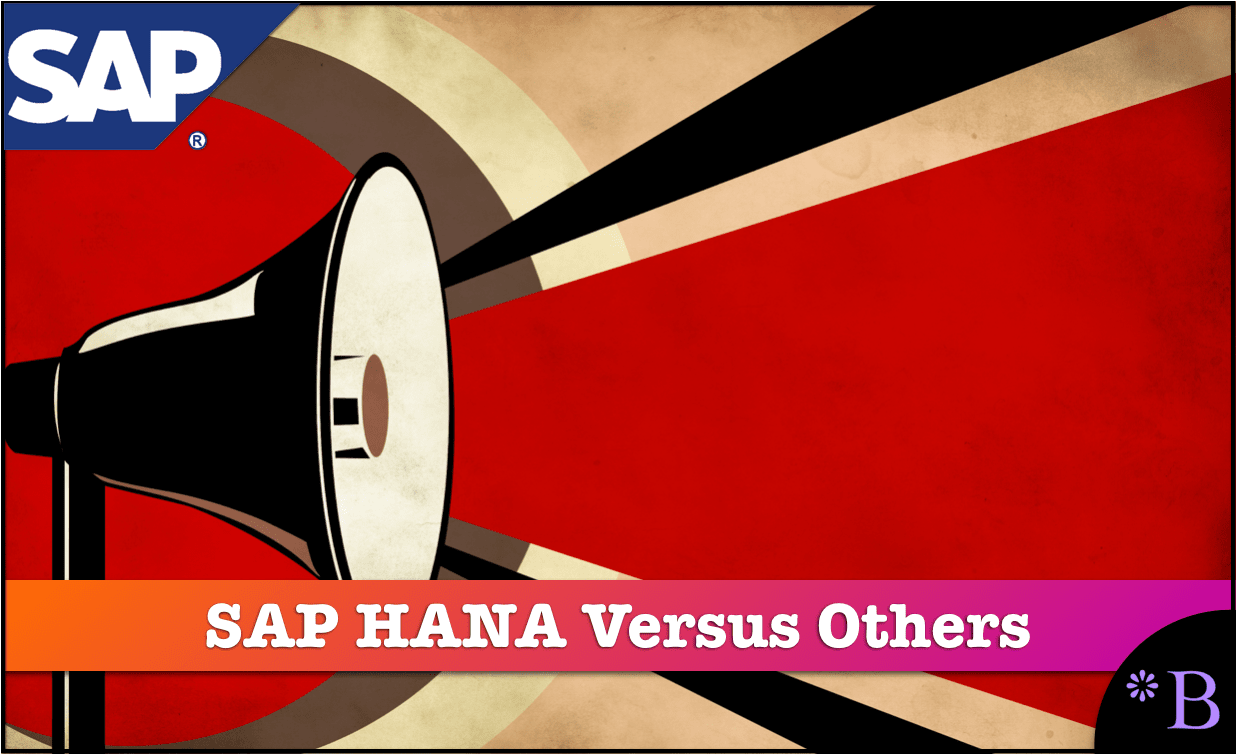How SAP HANA vs TeraData and Tableau Market Backend Technology
Executive Summary
- SAP markets HANA far differently from Teradata or Tableau.
- We evaluate these approaches.

Introduction
In a previous article, Has SAP’s Relentless SAP Push Paid Off? I cover whether SAP’s HANA major marketing push has provided the intended benefits? However, in this article, I offer several examples of how top competitors market their analytics.
Our References for This Article
If you want to see our references for this article and other related Brightwork articles, see this link.
Notice of Lack of Financial Bias: We have no financial ties to SAP or any other entity mentioned in this article.
How SAP HANA’s Competitors Market
A competitive analysis is vital because my argument is that if a marketing concept is successful, and competitors eventually adopt it.
However, focusing on in-memory computing has not been approved by competitors, at least nowhere near to the degree that SAP emphasizes the topic. That should tell SAP something. Let us look at two examples of leaders in the analytics space, which are the most relevant to SAP HANA; the software vendors Teradata and Tableau.
Teradata
Teradata is the leader in data warehousing and is the record holder in substantial high-performance databases; however, while they use in-memory computing when beneficial, their marketing strategy is not so single-mindedly focused.
Tableau
Tableau’s success is very well known at this point, and it is the leader in its space. Tableau grew rapidly from a small base to become a dominant self-service BI vendor by taking business from larger BI software vendors. SAP purchased Lumia to compete with vendors like Tableau that see most of the BI market growth.
Look at these samples of how Tableau emphasizes its backend technology.

Here is one of Tableau’s main pages. I deliberately picked a page with the most emphasis on background technology. Most of Tableau’s web pages don’t bring up the backend technology at all.
However, even here, the background technology is a link — that is, it is not the original pitch. If you want to select the link, you can find out about the background technology.
Upon clicking, this page comes up, and you can learn about their Visual Query Language for Data, etc…
It is available, but it is in the background. Tableau — as you can see, the user experience, flexibility, and many other aspects are emphasized if you visit their site. Their underlying technology is there for those who want to know. However, they don’t lead with it.

Even the technical page discusses more data than what database is used.
To go back to the first article, Has SAP’s Relentless SAP Push Paid Off?